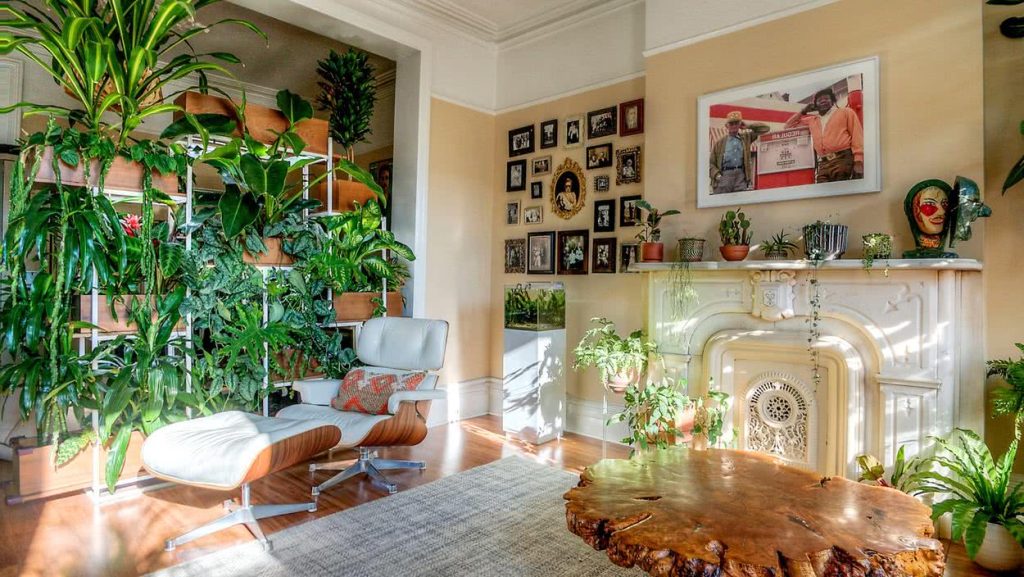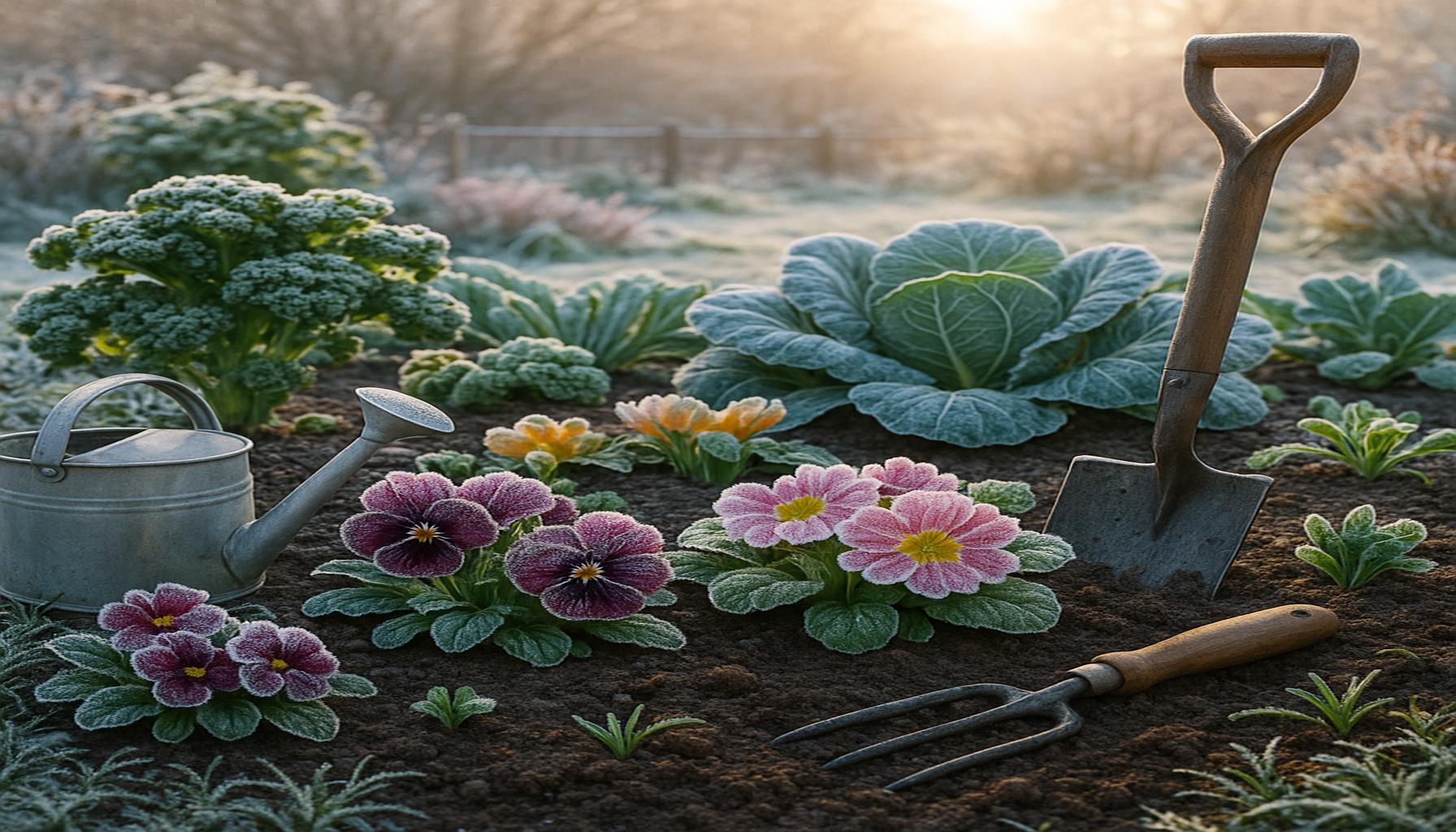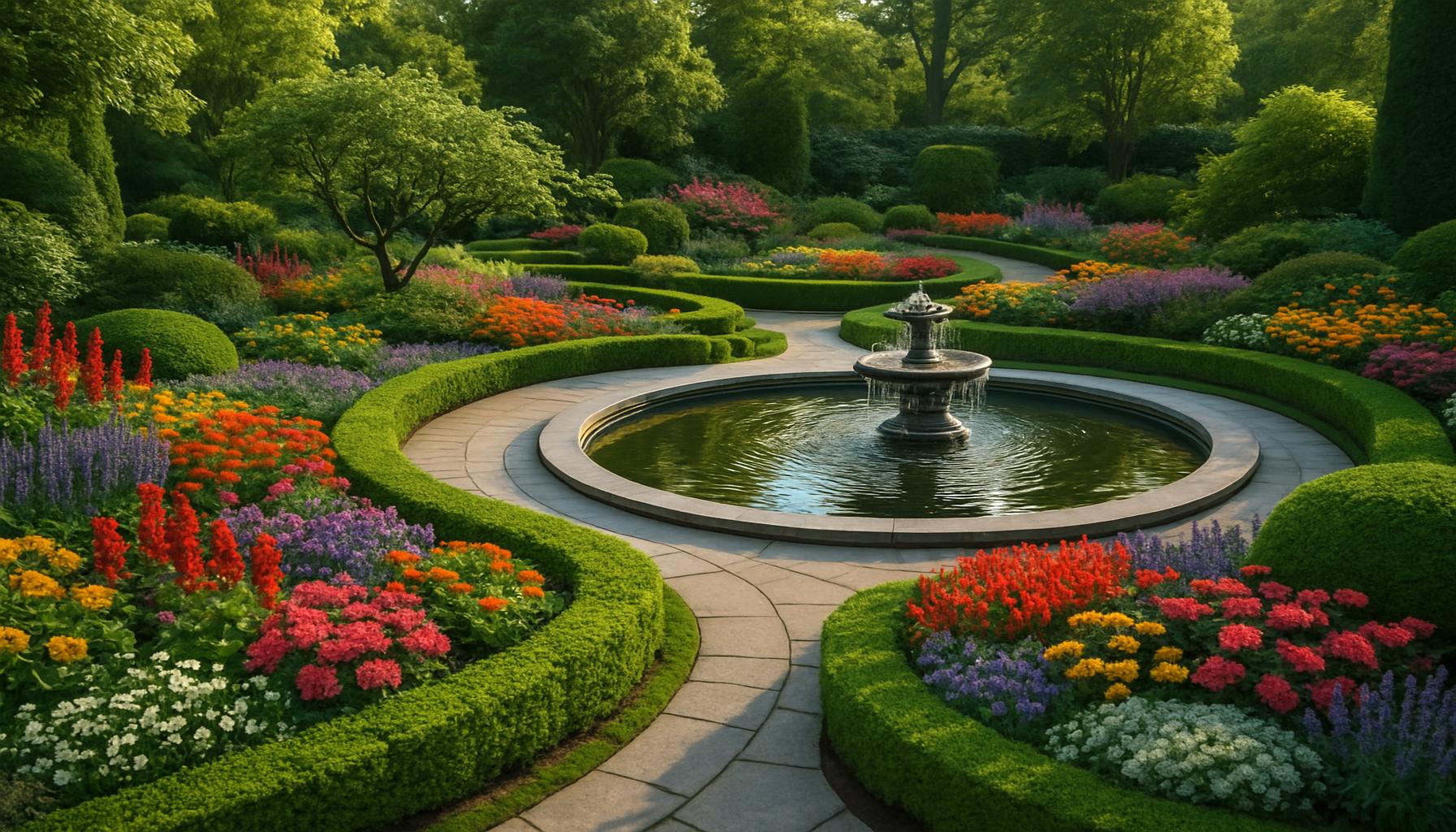Creative Vertical Gardening Solutions for Small Spaces

Embracing Vertical Gardening
As urban living continues to rise, the need for efficient use of space becomes more critical. Among the most innovative solutions to this challenge is vertical gardening, which transforms limited areas into lush green oases. This practice not only enhances aesthetics but also promotes sustainability and personal well-being. Vertical gardening offers city dwellers an opportunity to bring nature into their homes, reviving small spaces with life and color.
Why Vertical Gardens Matter
Vertical gardens serve as a perfect intersection of creativity and practicality. Whether installed on apartment balconies or compact courtyards, these gardens offer a myriad of benefits. Maximizing available space is one of their most significant advantages, especially in today’s urban settings where every square foot counts. By growing upwards rather than outwards, individuals can cultivate more plants in confined areas.
Not only do vertical gardens make efficient use of space, but they also improve air quality. Plants naturally filter the air, absorbing pollutants and releasing oxygen. This clean air contributes to healthier living environments, reducing stress and fostering a sense of calm. Vertical planting can also lower ambient temperatures, creating comfortable microclimates in urban areas.
Furthermore, these gardens provide the opportunity to grow a variety of plants, herbs, and vegetables at home. This not only encourages a sustainable lifestyle by reducing the carbon footprint associated with food transport but also ensures a fresh supply of ingredients right at one’s doorstep. From luscious strawberries to aromatic basil, the choices are vast and exciting.
This article will explore the Top 5 Creative Vertical Gardening Solutions tailored for small spaces. Prepare to be inspired as you unlock new possibilities in your gardening journey, blending artistry with nature. Investigate how simple materials like pallets, pocket organizers, and trellises can be transformed into stunning vertical gardens, encouraging you to reinvent your urban environment.

Top 5 Creative Vertical Gardening Solutions for Small Spaces
In an age where urbanization seems unstoppable, and expansive gardens more of a dream than a reality, vertical gardening reveals itself as an ingenious solution for city dwellers. It transforms compact urban balconies, blank walls, and even cozy interior spaces into verdant oases. By maximizing the vertical plane, these gardens not just beautify but also enhance the atmosphere, cleanse the air, and encourage biodiversity. This article delves into five trailblazing vertical gardening techniques that promise to spruce up small spaces, infusing them with a fresh lease on life.
5. Hanging Planters
Hanging planters serve as an artful fusion of practicality and aesthetics in gardening. Suspend plants gracefully above ground to preserve floor space, while offering a dynamic and layered visual display of greenery. These planters are versatile, coming in materials like ceramic, metal, or recycled plastics, and in various forms to curry favor with diverse interior and exterior styles.
Whether mounted from ceilings, fixed onto walls, or hooked onto balustrades, hanging planters find utility in every nook and corner. Here are a few insights into optimizing hanging planters:
- Mix and Match: Create a visually appealing setup by varying plant container styles and textures.
- Consider Plant Height: Mix trailing plants with erect varieties to add depth and create an intriguing, landscaped effect.
- Light Consideration: Match each plant’s sun needs to its location, ensuring that none are compromised.
Take, for example, the transformation of a cramped Parisian balcony into a vibrant jungle where cascading ferns and ascending herbs coexist in decorative harmony. This is a stellar illustration of how aesthetic and botanical needs can be perfectly aligned.
4. Vertical Wall Gardens
The vertical wall garden, or “living wall,” can convert mundane surfaces into lush tapestries of life. Indoor or outdoor, these green structures can sustain a wide variety of plant life, including aromatic herbs, decorative flowers, and even vegetables, promising both beauty and utility.
The uniqueness of vertical wall gardens lies in their structural systems, which can be crafted from materials like felt, wood, or modular plastic units. They actively contribute to better air quality and ambient noise reduction, making them valuable additions to small spaces.
An impressive example can be seen in Singapore’s Oasia Hotel, where massive vertical gardens envelop the building, offsetting urban pollution with refreshing greenery while enhancing aesthetic allure. Vertical wall gardens aren’t just structural additions; they’re active ecosystems that redefine how space is utilized.
3. Pocket Planters
For those with an inclination for minimalist solutions, pocket planters offer a tailored approach to vertical gardening. These planters use fabric or felt pots that can be affixed to walls or fences, cleverly utilizing vertical space without encroaching on living areas.
Ideal for a variety of small flora – think succulents, aromatic herbs, or small blooms – pocket planters are especially popular for kitchens where fresh ingredients become accessible and ornamental. To master the use of pocket planters, consider the following:
- Plant Selection: Opt for lightweight plants that thrive with minimal soil and drainage needs.
- Watering Care: Implement drainage solutions to prevent root rot and ensure pockets withstand excess water.
- Sunlight Exposure: Position your planters where they can bask in appropriate sunlight conditions for their plant occupants.
Delve into the use of pocket planters in urban New York apartments where wall-mounted herb gardens fuse culinary practicality with an earthy aesthetic. Such installations highlight how strategic gardening can seamlessly integrate into everyday life.
2. Ladder Gardens
Ladder gardens blend rustic charm with functional horticulture, using upcycled ladders as multi-tiered plant holders. Whether crafted from wood or metal, ladders present a unique way to showcase arrangements of varied plant species.
Ladder gardens not only organize plant displays but also create engaging textures and heights, making them visually appealing. Moreover, their versatility allows for seasonal changes or personalizing plant setups according to one’s evolving taste.
Consider the example of a creative project in Melbourne, where a ladder garden transforms a once plain studio apartment corner into a dynamic symphony of colors as it houses an array of flowering plants. Such setups illustrate the potential of turning the mundane into visually striking and ecologically meaningful spaces.
1. Modular Plant Systems
At the pinnacle of our exploration is the modular plant system; these frameworks offer unparalleled adaptability and elegance in gardening design. Comprising interconnected units, modular systems can morph to fit any space requirement or aesthetic preference, embodying innovation at its peak.
Their flexible nature makes them particularly appealing for small spaces where every centimeter is precious. They support an array of plant varieties, including decorative foliage and edibles like herbs and even compact vegetables.
In Berlin’s urban apartments, such modular systems create refreshing environments where beauty meets functionality, effortlessly bridging decor with sustainability. As you curate your own green corner, consider modular systems for their ease of installation, modification, and ability to consistently accentuate and redefine your space.
As you ponder ways to enrich your living quarters, consider these inventive vertical gardening solutions. From hanging planters to cutting-edge modular systems, embracing greenery is no longer confined to sprawling gardens but has evolved to fit even the smallest of urbanscapes, transforming them into calming, vibrant retreats.
| Type of Vertical Garden | Key Features | Advantages | Disadvantages | Best For |
|---|---|---|---|---|
| Living Walls | Wall-mounted structures with integrated irrigation. | Maximizes space while beautifying interiors; offers excellent air purification. | Maintenance-intensive due to irrigation systems and plant health monitoring. | Urban dwellers and businesses wanting to enhance ambiance. |
| Vertical Planters | Standalone units or modular designs that can be attached to fences or walls. | Customizable layout to suit personal taste and space limitations. | Limited plant variety as some plants do not thrive in confined or vertical spaces. | Hobby gardeners and small-space enthusiasts seeking flexibility. |
| Hanging Gardens | Utilize various hanging pots and items made to suspend plants. | Creative display options that add a unique touch to any space. | Potential for overwatering and difficulty in reaching plants for care. | Interior designers looking for innovative décor solutions. |
| Pocket Gardens | Fabric pockets or vertical boxes that can hold multiple plants. | Space-efficient and easy to assemble, suitable for all gardening skill levels. | Limited growth potential for larger plants and may require frequent care. | Beginners or kids interested in gardening with minimal investment. |
The concept of vertical gardening profoundly transforms small living spaces, showcasing both functionality and aesthetic appeal. Living walls offer a sophisticated touch while promoting better indoor air quality, demonstrating both style and sustainability. However, their intricate irrigation demands careful maintenance, making them ideal for committed enthusiasts rather than those seeking low-effort options.On the other hand, vertical planters provide a unique approach where one can innovate their arrangement according to their personal aesthetic, yet the choice of plants may be limited. These modular designs cater to many, allowing for creative expressions in compact areas.Hanging gardens, characterized by their unconventional presentation, introduce lively decor into any room. While they enable creativity, achieving the right balance in watering can be challenging since access becomes cumbersome. Finally, pocket gardens present a versatile choice perfect for those just starting their gardening journey. They are budget-friendly and simple to set up, yet could restrict growth for more substantial plant species. Each of these options not only encourages greening of urban spaces but also fosters a unique relationship with nature, regardless of available square footage.
Frequently Asked Questions about Vertical Gardening
What is vertical gardening and why is it beneficial for small spaces?
Vertical gardening is an innovative approach where plants grow upwards, typically against a wall or within vertical structures. This technique is particularly beneficial for small spaces as it maximizes the use of limited areas, allowing for a lush garden without encroaching on valuable floor space. It’s an excellent solution for urban environments where outdoor square footage is a luxury.
What kind of plants are best suited for a vertical garden?
The best plants for a vertical garden typically include those that are lightweight and can thrive in a vertical setting. Some popular options are ferns, succulents, and air plants. Additionally, climbers like ivy or certain varieties of vegetables and herbs, such as mint and basil, also adapt well to vertical spaces. Selecting the appropriate plants depends significantly on the light conditions and climate.
How do I maintain a vertical garden?
Maintenance can vary depending on the plants chosen. Generally, it’s important to ensure that your vertical garden receives adequate water, considering they can dry out quicker than traditional gardens. Drip irrigation systems can be a game-changer in this regard. Regular trimming and feeding with suitable fertilizers will keep your garden thriving. Monitoring for pests is crucial, as the compact nature can sometimes lead to infestations.
Is it possible to create a vertical garden indoors?
Absolutely! Indoor vertical gardens can be a stunning addition to your home’s decor. You’ll need to consider factors such as lighting, humidity, and plant selection to suit indoor conditions. Grow lights can substitute natural sunlight if necessary, and choosing plants that suit indoor environments, like peace lilies or pothos, will ensure a healthy vertical garden indoors.
What materials and tools are necessary to start a vertical garden?
Starting a vertical garden doesn’t require many specialized tools, but some materials can ease the process. You will need vertical planters, pots, soil, and suitable plants. Depending on your design, structures like pallets, trellises, or hanging pots may also be useful. Basic gardening tools such as a trowel, scissors or pruners, and a watering can will help maintain your garden effectively. The key is to start with a design plan that suits your space and style.
Conclusion: The Art of Vertical Gardening
As urban areas become increasingly crowded, creative solutions like vertical gardening offer a refreshing way to bring greenery into small spaces. This technique not only enhances the aesthetic appeal of any area but also contributes to environmental sustainability. Vertical gardening allows urban dwellers to utilize limited space efficiently, enabling them to indulge in the joys of gardening without the need for expansive land.
Throughout this article, we explored a variety of innovative techniques that cater to different spaces and preferences. From using recycled materials to incorporating hydroponic systems, each method has its unique advantages that can transform even the tiniest balcony or indoor corner into a lush oasis. Wall planters, hanging gardens, and tiered shelves exemplify how creativity can blossom in constrained settings.
Moreover, vertical gardening encourages community engagement and personal well-being. By fostering a connection with nature, individuals can experience reduced stress levels and an improved sense of happiness. The act of nurturing plants can become a meaningful hobby that enriches one’s lifestyle.
In conclusion, vertical gardening represents more than just a trend; it is a sustainable movement toward greener urban environments. By embracing these creative solutions, individuals can significantly impact their personal living spaces and contribute positively to the ecosystem. For those curious about new creative hobbies, delving into vertical gardening offers a world of possibilities waiting to be discovered. As urbanization continues to rise, the need for such innovative green solutions becomes ever more crucial, urging us all to consider how we can incorporate these concepts into our daily lives.


